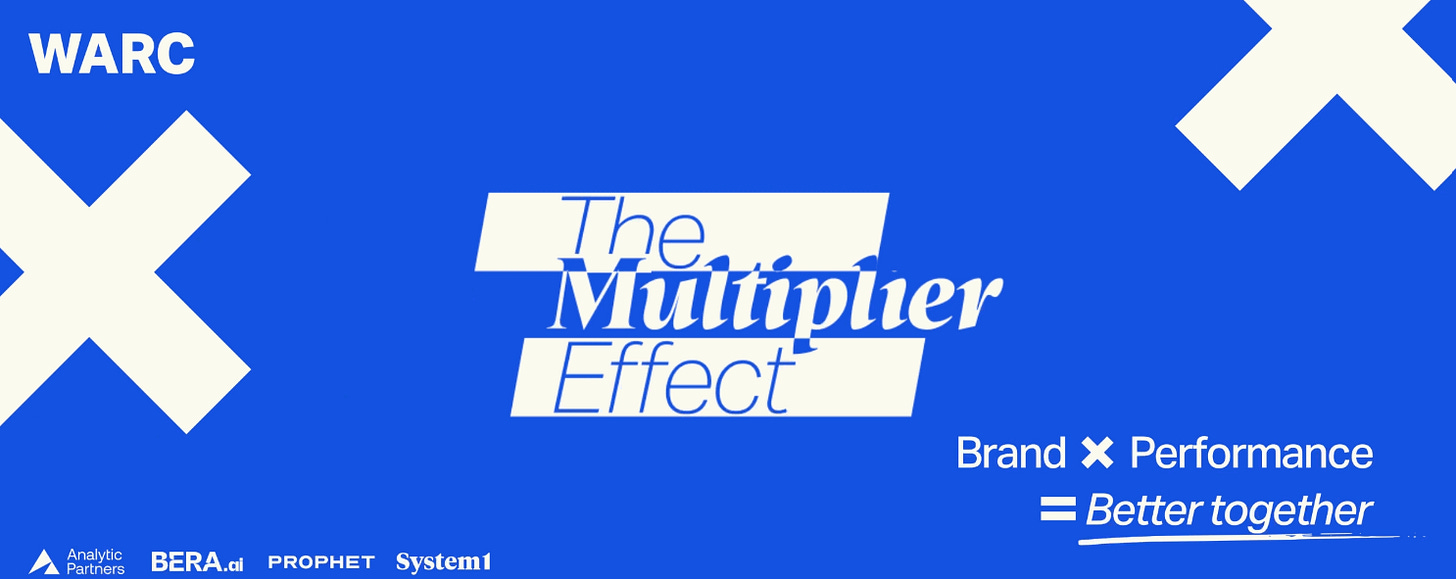Brand vs. Performance: Who's The Real MVP?
We've crunched the numbers so you don't have to.
Sometimes, in life, you have to make difficult choices whether you like it or not; The Beatles or The Stones? Messi or Ronaldo? Star Wars or Star Trek? Brand or performance marketing? As marketers, this is the choice we have been faced with for the last two decades but just as you can enjoy Sgt. Pepper’s AND Sticky Fingers, you can and probably should do both. Here's why…
Towards the end of last year we collaborated on a comprehensive report with marketing effectiveness experts WARC to try and settle the debate between brand and performance marketing once and for all. The report is a 100 page deep dive into every aspect of the argument and is well worth a read but for all you time-poor professionals out there, here's the five things you really, really need to know:
1. Consumers need to know your brand to buy your product
At any one time only about 3% of your total addressable market is ready to buy and thus be likely to respond to your performance ads. The rest first need to know your brand and make a connection with it, which is best accomplished through brand advertising. As the old saying goes, fortune follows fame and our findings agree.
2. It isn't brand VS. performance, it's brand X performance.
Turns out, brand vs. performance is a false binary anyway. Shifting from a performance focus to a more balanced advertising investment portfolio can lift overall revenue returns between 25% - 100%, with a median uplift of 90%.
To achieve this it is recommended to spend no less than 30% of your total media budget on equity driving ads, with 40-60% representing a typical "best practice" range. CMOs should understand the “media multiplier” between short and long term of their media investments, which can vary by channel, but is generally between 1.1x and 2x.
3. There's a reason why we under-invest in brand and over-invest in performance
You've probably heard the phrase, what gets measured gets managed, but did you know that's not the full quote? Often wrongly attributed to management consulting guru Peter Drucker it actually comes from social scientist V.F. Ridgway who, in a 1956 paper entitled 'Dysfunctional Consequences of Performance Measurements' wrote this:
"What gets measured gets managed — even when it’s pointless to measure and manage it, and even if it harms the purpose of the organization to do so."
In other words, we often measure the wrong things simply because they are measurable. Performance marketing is easy to measure and promises a simple dollar in, dollar out equation but once you have extracted all the dollars from the 3% of consumers ready to buy, where does growth come from? You need to replenish the pipeline of buyers and there's only one way to do that - build brand equity.
4. Silos are undermining effectiveness
There's another important reason why the false binary of brand vs. performance persists and it's how we organise ourselves inside brands and agencies, as our own APAC Marketing & Communications Director, Nikki Taylor explains:
Like the online and offline teams described by Nikki, the performance and brand marketing teams are often separately run and even set in competition with each other instead of collaborating for maximum impact. It's perfectly possible, and in fact preferable, to tie promotions to brand identity to ensure short term sales tactics strengthen long-term brand equity - try it!
5. Performance marketing gets more expensive over time
Have you ever noticed how you have to spend more and more money to reach the roughly the same number of people but achieve gradually lower and lower returns over time? There's a reason for that and it's called the advertising 'Doom Loop'. It's what happens when we have saturated our current audience and growth starts to slow, so we try to optimise the channels closest to the point of purchase to drive more sales of our product. What we actually need to do is make new audiences more aware of and amenable to our brand so that when they come into the market they are open to purchase and our performance advertising can tip them over the edge.
The truth is, the payback of performance advertising is only as strong as the equity of the brand but more money spent on performance means less money spent on brand, which weakens the brand and causes performance to stall.
6. Bonus Bullet Point: Why this matters even more in APAC
In our region we often have smaller teams, budgets and resources than our American or European counterparts and yet we are expected to grow faster. One logistics firm we spoke with were given a target 2.5 x their current business plan with no additional budget and a strict remit to stick to performance tactics, which is a recipe for failure.
We hope that this report will help our APAC clients and colleagues to make a strong, data driven argument for a more balanced investment in brand as well as performance. To download the full report, free, go to: https://page.warc.com/the-multiplier-effect-report.
Thanks for reading. The CMO Office posts go out weekly but for a more frequent dose of data and expertise follow us on LinkedIn and/or TikTok too.



